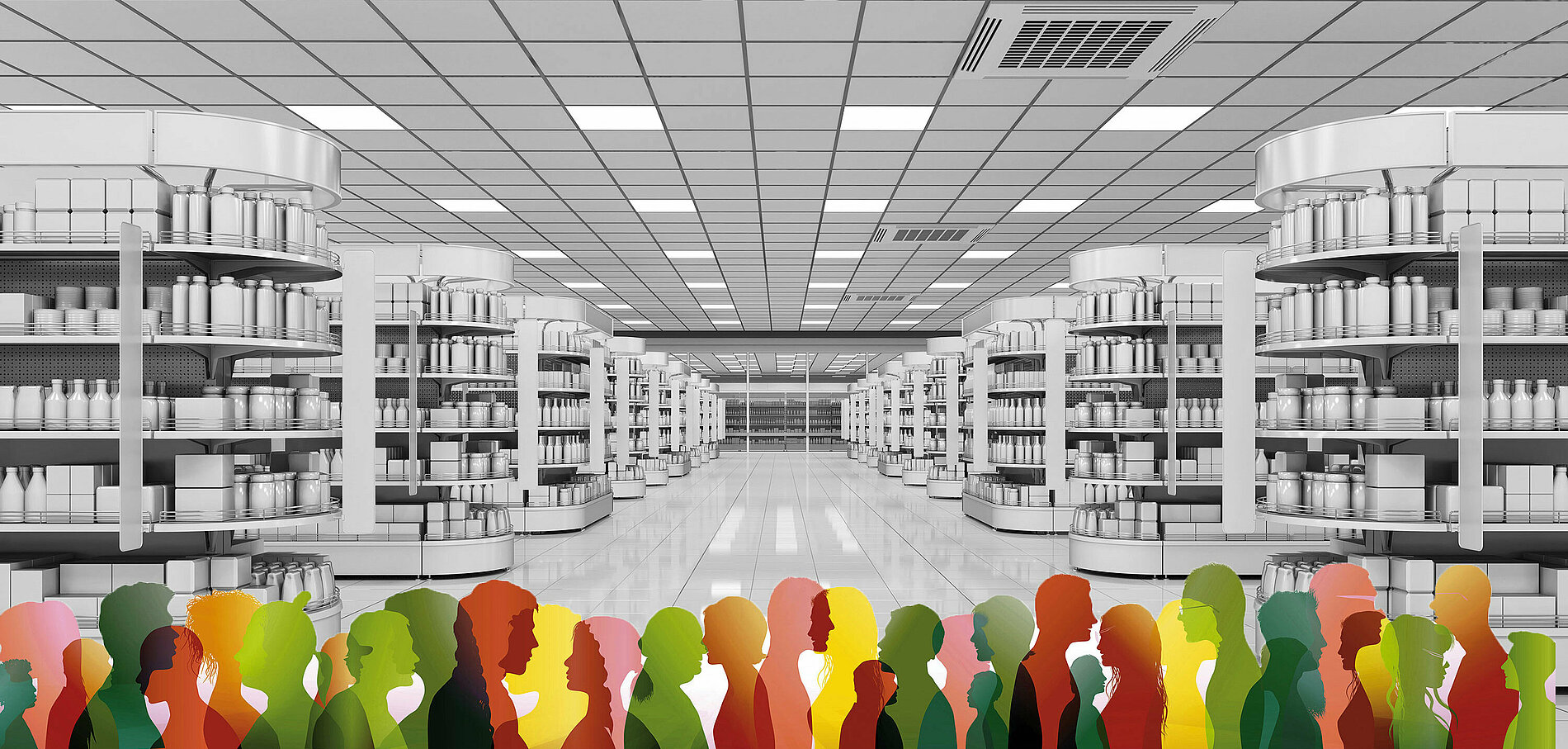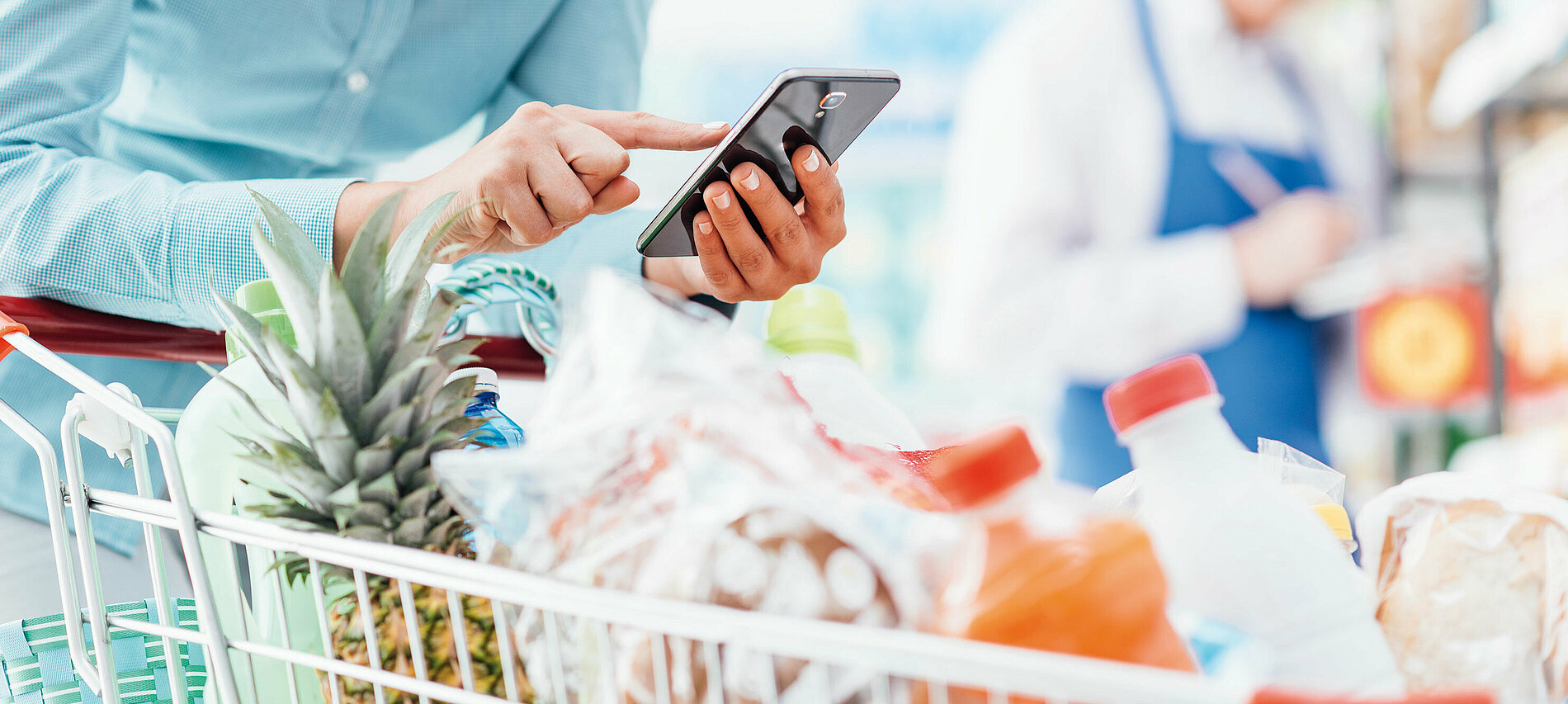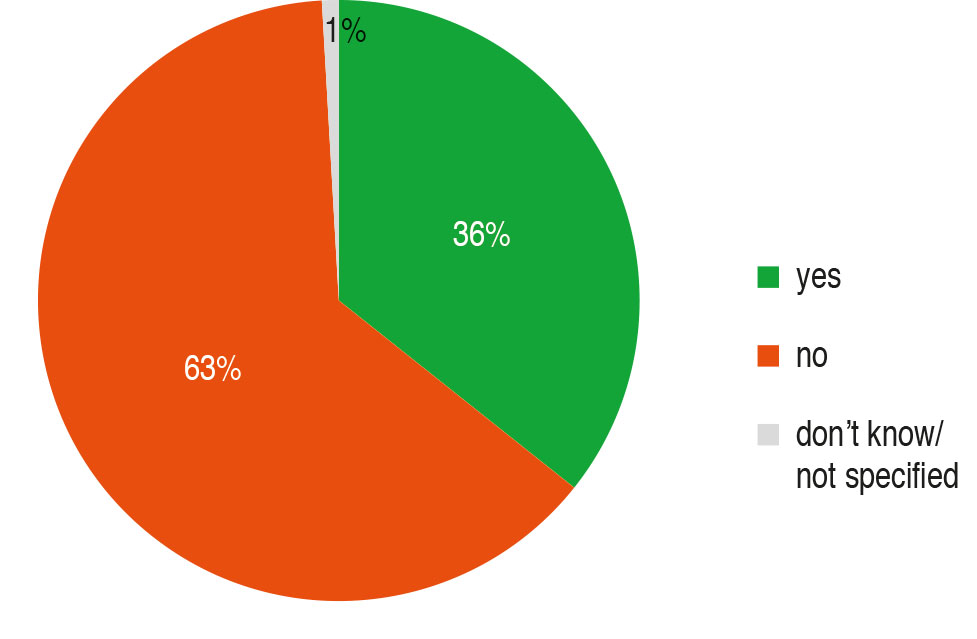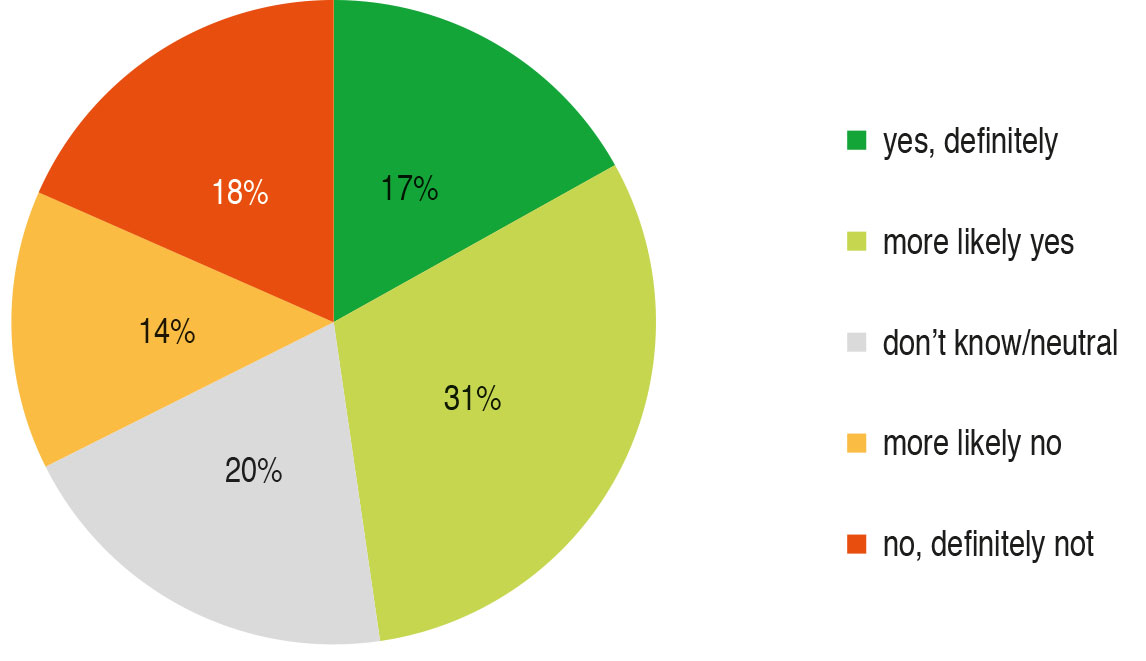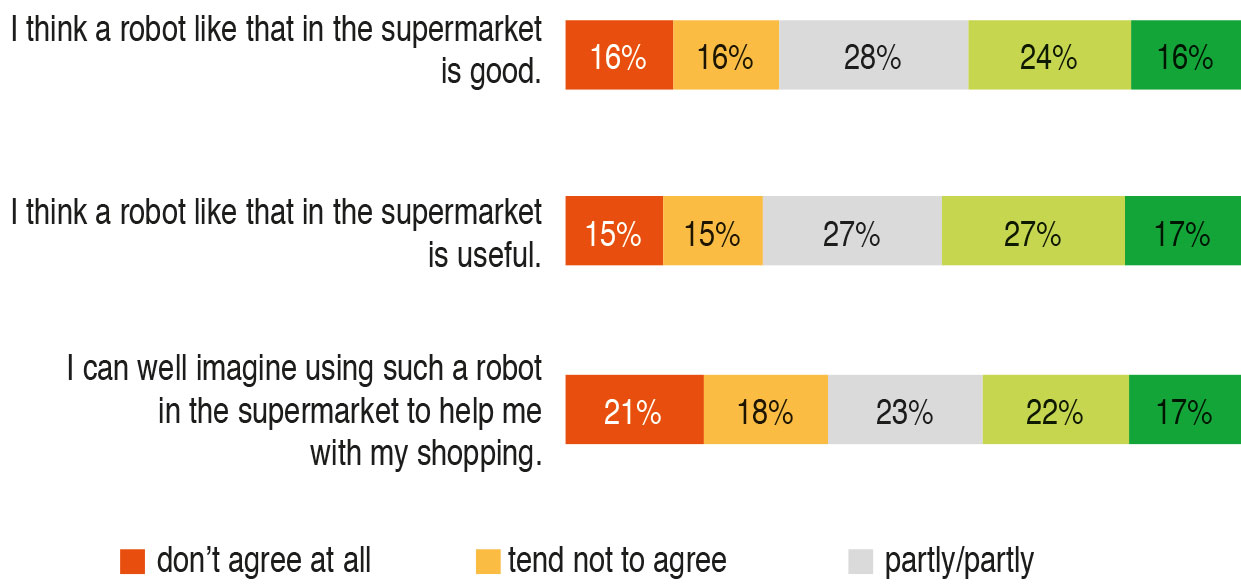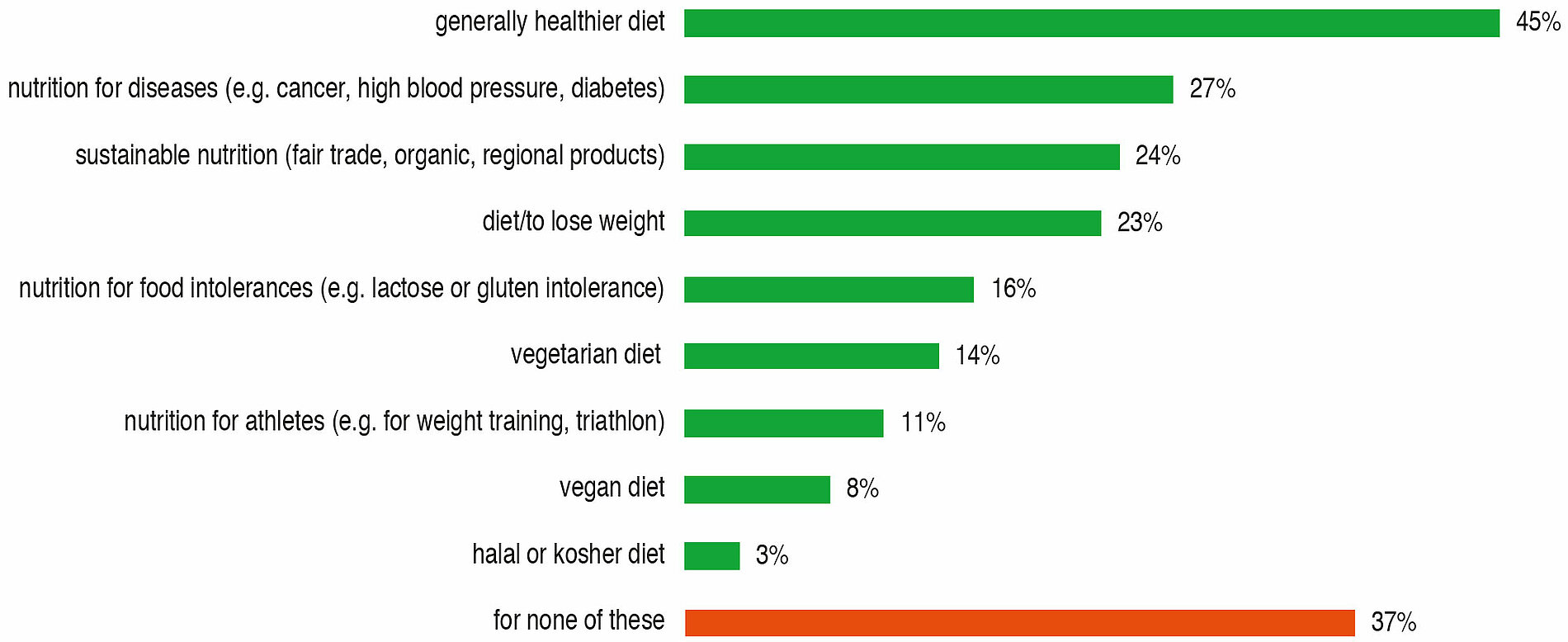Author
Prof. Dr. Holger Buxel
Professor of Marketing in the Food Sector at Münster University of Applied Sciences
Contact:
Simone Schiller
Managing Director DLG Competence Center Food
(DLG-Fachzentrum Lebensmittel)
S.Schiller@DLG.org
My Food – Personalisation and Nutrition
This publication is Part 3 of the study “My Food – Personalisation and Nutrition”, which was conducted by the DLG in cooperation with Prof. Dr. Holger Buxel (Münster University of Applied Sciences) in summer 2019. The publication series consists of three parts that illuminate the topic of personalisation in the food sector and in nutrition from different perspectives.
Study Part 1: Personalised Food
Personalised foods are products that are adapted by manufacturers to meet personal customer needs. To this end, manufacturers usually offer customers various options on how they can have the products adapted to their personal taste, ingredient, shape, packaging design, quantity or preparation preferences. To analyse the relevance and supply of personalised food, a consumer, company and expert survey was conducted.
Consumer survey: The relevance and acceptance of personalised food offers from the consumer’s point of view was examined. For this purpose, a representative consumer survey with n=1,000 was conducted in July 2019.
Company survey: The study investigated the status quo of the offer of personalised food from a company’s perspective and how the future development of the trend towards greater personalisation of food is assessed. For this purpose, a survey was conducted from July to August 2019 among n=184 companies from the food industry that produce food for end consumers.
Expert survey: To complement the consumer and company survey, experts from the food industry were interviewed on selected aspects of personalisation.
Study Part 2: Personalised Nutrition
Companies from the nutrition industry offer the creation of personalised nutrition concepts to better adapt nutrition to personal preferences and health needs. The customised nutritional concepts are often generated through analyses of metabolism, genetic profiles, health status, lifestyle and personal preferences.
The relevance and acceptance of offers of personalised nutrition concepts from the consumer’s point of view was examined. For this
purpose, a representative consumer survey was conducted among n=1,000 consumers in July 2019.
Study Part 3: Personalisation in food shopping and nutrition apps
For food shopping and nutrition, digital offers are being developed in the form of apps or robots that generate suggestions for shopping or consumption in real time based on the personal characteristics and needs of consumers in order to simplify everyday life.
The study investigated the relevance and acceptance of such personalisation offers in food shopping and how helpful apps are in nutrition and food shopping from the consumer’s point of view. For this purpose, a representative consumer survey was conducted among n=1,000 consumers in July 2019.
Introduction
The use of apps and other digital services is now widespread among consumers when searching for information and shopping. Food retailers are also seeing an increasing development of digital offerings to personalize the shopping experience using retail food trade apps or robots. For nutrition, more and more apps are also being offered that generate personalised suggestions and recommendations for food purchases, recipes, the preparation of products and/or nutrition.
The development of such offers is interesting for companies from the food and nutrition sector because they open up the possibility of better understanding and influencing the purchasing and nutrition behaviour of customers and also optimising customer service. Offers of this kind can be interesting for consumers, as they can use them to better adapt and simplify their food shopping, preparation and consumption behaviour to personal preferences and health needs. Against this backdrop, market observers currently classify the development of digital personalised advice and recommendation offers regarding food shopping and nutrition as an important trend topic. Therefore, the relevance and acceptance of digital personalised advice and recommendation offers in the form of apps and robots was also considered from the consumer’s point of view as part of the “My Food” consumer survey (Fig. 1).
Examination set-up: Personalisation in Food Shopping and Nutrition Apps |
Digital products in the form of apps or robots are being developed for food shopping and nutrition that generate suggestions for shopping or consumption in real time based on the consumer’s personal characteristics and needs in order to simplify everyday life. The study investigated the relevance and acceptance of such personalisation offers in food shopping as well as apps in nutrition and food shopping from the consumer’s point of view. For this purpose, a representative consumer survey with n=1,000 consumers was conducted in July 2019. The focus was on the following questions:
|
Fig. 1: Research structure of the study part “Personalisation in food shopping and nutrition apps”
How interesting are offers of personalisation of the shopping experience in the retail food sector from the consumer’s point of view?
Unlike in the non-food sector, where online retailing has now established itself as a central sales channel for many product groups, most food products in Germany are still purchased by consumers in traditional stationary food retail outlets. The proportion of consumers surveyed in the “My Food” study who have already bought food on the Internet is only 36% (Fig. 2).
Many food retailers are therefore working on the development of digital offers around the sale of food, in addition to concepts for online shops, as well as apps for smart phones that customers can use to shop and personalise their shopping experience in the stationary shop (“food retailing apps”).
How interesting are food retailing apps from the consumer’s point of view?
Apps from food retailers can offer consumers different features and capabilities to simplify in-store shopping and make the shopping experience more personalised. The respondents were presented with some possible functions of grocery apps and asked which of the functions they personally found interesting or useful. It can be seen (Fig. 3):
- An app function that shows you which shelf a product is on and how to get there the fastest is something 41% of respondents find interesting or useful. In the case of an app function that alerts you to products that may be a good fit for your personal preferences (e.g. filters for organic, fair trade or lactose-free products) while walking through the supermarket, it is 20% of respondents.
Grocers sometimes offer apps for smartphones that customers can use to make in-store purchases. Here you can see some possible functions of these apps. Which of these app functions do you personally find interesting or useful?
App function ...
Fig. 3: Interest in the functions of food retailing apps
- More than one in three respondents (37%) also find an app function interesting or useful, which can be used to display further information on products in the shop (e.g. information on origin, nutritional values, allergens or recipes for the product).
- An app function as a digital customer card, with which purchases can be saved at the checkout in order to receive discounts or rewards later, is something that 36% of respondents find interesting or useful.
- Only one third of the respondents (32%) do not find any of these functions interesting or useful for them personally.
Imagine a supermarket like Edeka, Rewe, Aldi or Lidl offering you an app for downloading that has all these functions (customer card for saving, recommendations for products and offers, information about products and help with a product search).
Can you well imagine using such an app from a food retailer?
The offer of a food retailing app can therefore be interesting for many consumers. It is therefore not surprising that almost every second respondent (48%) can well or even definitely imagine using a food retailer’s app that offers functions to simplify in-store shopping and to personalise the shopping experience more (loyalty card to save money, recommendations for products and offers, information about products, help with product search; Fig. 4).
How interesting are advice robots in food retailing?
Personalisation of the shopping experience can be achieved via apps, but also with the help of other digital services in food retailing. Advice robots are currently being developed for supermarkets, which are located in the shop and can be used by customers to answer questions about products (e.g. whether a product contains lactose or where it comes from), to have products suggested that are a good fit for them (e.g. “which lemonade contains no preservatives”) or to get help finding a product.
When asked how consumers would rate such a robot in their local supermarket, it becomes apparent (Fig. 5):
- 44% of respondents find a robot like this useful in the supermarket.
- Almost two out of five consumers (39%) can well imagine using a robot like this in the supermarket to help them with their shopping.
Overall, it can be seen that larger consumer groups are generally open to the use of offers to personalise the shopping experience in the retail food trade by means of food retailing robots or apps.
Robots are currently being developed for supermarkets, which are located in the shop and can be used by customers to answer questions (e.g. whether a product contains lactose or where it comes from), to have products suggested that are a good fit for them (e.g. “which lemonade contains no preservatives”) or to be guided to a product they are looking for.
Imagine a robot like that in your supermarket. To what extent do you agree with the following
statements?
How interesting are nutrition and food apps from the consumer’s point of view?
There are now various types of apps for smartphones, tablets or laptops/PCs on the topics of nutrition and food & drink that generate personalised nutrition recommendations, recipe and product suggestions. With regard to the question of how interesting such apps are for consumers, the respondents were presented with nine possible app types and asked which ones they could well imagine using (Fig. 6):
- Almost every second respondent (45%) can well imagine using apps for nutritional recommendations, recipe and product suggestions with a focus on a generally healthier diet.
- Apps for dieting/losing weight are also interesting for many consumers. Almost every fourth respondent (23%) can well imagine using an app of this kind.
- The share of respondents who can well imagine using apps for nutrition in case of illness (e.g. cancer, high blood pressure, diabetes) is 27%. For apps on nutrition for food intolerances (e.g. lactose or gluten intolerance), it is 16% of the respondents.
- In addition to apps for a healthier diet, apps that generate information and recommendations for sustainable consumption are apparently also of interest to consumers. Just under one in four respondents (24%) can well imagine using apps for sustainable nutrition (fair trade, organic, regional products).
- The proportion of respondents who cannot imagine using any of the types of apps presented is 37%.
There are various types of apps for smart phones, tablets or laptops/PCs on the topics of nutrition and food & drink. Which ones can you well imagine using? Apps for nutritional recommendations, recipe and product suggestions for a ...
Fig. 6: Willingness to use nutrition and food apps
Especially in personalised nutrition, apps often play a role. In personalised nutrition, individualised nutrition concepts are created for individual consumers in order to better adapt the diet to personal preferences and health needs. Many providers of personalised nutrition recommendations work with apps to efficiently integrate their recommendations into everyday consumer life. When asked whether they could imagine installing such apps from providers of personalised dietary recommendations, 36% of respondents said they could imagine this very well or rather well.
Apps for personalised nutrition can also be paired with wearables such as fitness wristbands or smart watches that can monitor sleep, pulse, blood pressure and exercise. This allows the body’s condition and nutritional requirements to be analysed in real time and suitable nutritional recommendations to be generated. Those respondents who could very well or rather well imagine installing apps for personalised nutritional recommendations on their devices were also asked how well they could imagine using a fitness wristband or smart watch in conjunction with such an app. This is something 76% of these respondents can imagine well or very well (Fig. 7).
Many providers of personalised nutrition recommendations and suggestions for products or restaurants work with their own apps that have to be installed on a smart phone, tablet and laptop/PC.
Fig. 7: Willingness to use apps for personalised nutrition
he survey results show that apps in the area of nutrition do meet with acceptance and interest among consumers.
It is therefore not surprising that just under one in ten respondents (9%) already uses an app on the topic of nutrition or food & drink.
Those respondents who already use an app on the topic of nutrition or food & drink were also asked which apps these were. The number of different apps mentioned here by the respondents is broad and amounts to almost 50 apps. The three most frequently used apps among the respondents are the apps from Chefkoch, YAZIO and Lifesum.
Conclusion
The study focused on the question of the relevance and acceptance of personalisation offers in food shopping and apps in nutrition and food shopping from the consumer’s point of view. The results of the study can be condensed into the following three key statement:
Food retailing apps are fundamentally interesting for consumers.
Apps from food retailers that customers can use to shop and personalise their shopping experience in stationary shops (“food retailer apps”) are fundamentally interesting for many consumers.
- Just under one in two respondents (48%) can well or even definitely imagine using a food retailer’s app that offers functions to simplify in-store shopping and to personalise the shopping experience to a greater extent.
- Particularly interesting are app functions that show which shelf a product is on and how to get there the fastest, as well as app functions with which further information on products in the shop can be displayed (e.g. information on origin, nutritional values, allergens, recipes for the product). Many respondents also find an app function as a digital customer card, with which purchases can be saved at the checkout in order to receive discounts or rewards later, interesting or useful.
Apps for nutrition and the topic of food & drink are also of interest to consumers.
- Almost every second respondent (45%) can well imagine using apps for nutritional recommendations, recipe and product suggestions with a focus on a healthier diet.
- In addition to a healthier diet, apps that generate information and recommendations for sustainable consumption are apparently also of interest to consumers. Just under one in four respondents (24%) can well imagine using apps for sustainable nutrition (e.g. fair trade, organic, regional products).
Apps in the area of nutrition are already being used by consumers today.
The interest in nutrition and food apps among consumers is reflected in their use. Just under one in ten respondents (9%) already uses an app on the topic of nutrition or food & drink. This shows that in the area of nutrition and food apps, many different offers are used by the respondents.
What does the future have in store?
With regard to offers to personalise the shopping experience in the supermarkets by means of food retailing robots or apps, it is clear that larger consumer groups are quite open to the use of such personalisation aids. Nutrition and food apps are also of interest to larger consumer groups and are already being used by a significantly large group of consumers.
For the future, it is to be expected that both offers for personalising the shopping experience in supermarkets and nutrition and food apps will become increasingly widespread. This will presumably also be accompanied by a change in food search and purchasing behaviour, which will bring new opportunities, but also risks, for food manufacturers and retailers.
Dealing with this development at an early stage and finding solutions for the changing framework conditions can therefore be seen as an important task for the future for companies and organisations in the food and nutrition industry.
This publication is intended to provide some data and insights as a basis for this debate.
Kontakt
Simone Schiller • Geschäftsführerin DLG-Fachzentrum Lebensmittel • Tel: +49(0)69/24 788-390 • S.Schiller@DLG.org

